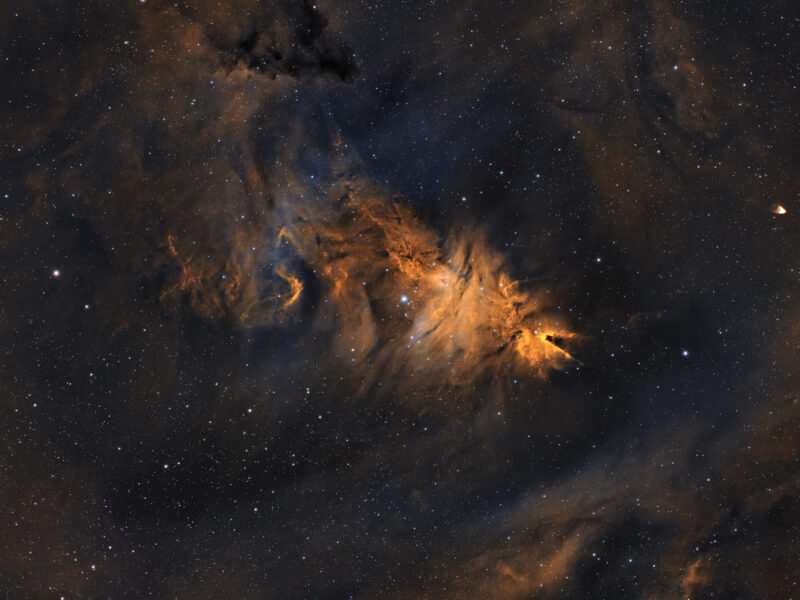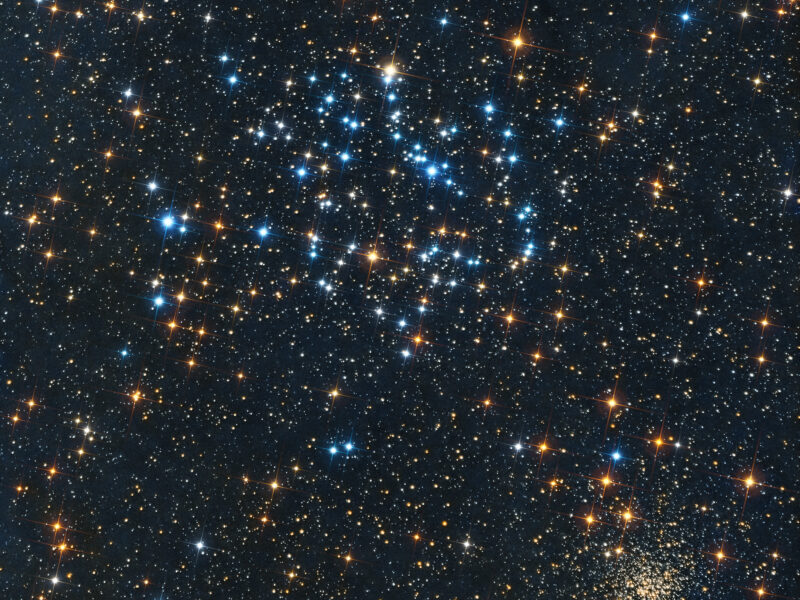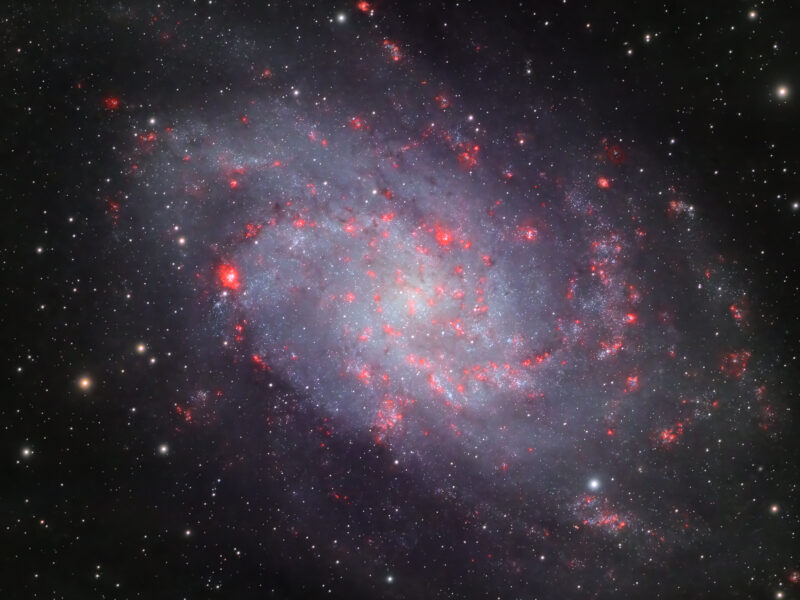I’m approaching my third year of astrophotography, and I’ve owned a Redcat 51 since I started in 2022. Despite having the perfect telescope for this huge object, I’m just now getting around to imaging the Seagull Nebula (IC 2177). Part of the delay was practical – this target sits fairly low in our southern sky, and a large tree blocked the view until we took it down 18 months ago. But the main reason is that the winter sky is simply packed with excellent astrophotography targets. Between favorites like the Orion Nebula, The Pleiades, and even the more challenging Jellyfish Nebula, the Seagull Nebula kept getting bumped to the next season. But after finally dedicating time to this expansive nebula, I’m glad I waited – the results were definitely worth it.
What is the Seagull Nebula?
The Seagull Nebula (also cataloged as IC 2177) is a massive deep sky target located between the constellations Monoceros and Canis Major, approximately 3,650 light-years from Earth. This stunning region of nebulosity spans about 100 light-years across and appears about seven times the size of the full Moon in our night sky.
What makes the Seagull Nebula so recognizable is its distinctive shape that resembles a gull in flight, with clearly defined wings spread wide across the cosmos. The nebula contains a mixture of hydrogen gas clouds, star clusters, and darker dust lanes that give it such a dynamic appearance.
Located near Sirius (the brightest star in our night sky), the Seagull Nebula is a popular target for astrophotographers seeking to capture large-scale nebulosity with interesting structural details.
Capturing The Seagull Nebula With My Redcat 51 Telescope
I shot this with my wide-field telescope, a Redcat 51 using my ZWO ASI533MM mono camera. The imaging process spanned multiple nights, allowing me to collect nearly 12 hours of total integration time. Here’s the breakdown of my data collection:
| Filter | Duration |
|---|---|
| Ha | 4.2 hours |
| Oiii | 3.85 hours |
| Sii | 3.1 hours |
| RGB | 30 mins |
| Total Integration Time | 11hrs 39min |
This extensive data collection was crucial for achieving a high signal-to-noise ratio, especially in the fainter regions of the nebula’s wings and the delicate filaments that stretch throughout the structure.
Processing with Dynamic Narrowband Combinations
For this image, I opted for a dynamic narrowband combination technique, which uses a Pixelmath formula to blend the data from Sulfur-II, Hydrogen-alpha, and Oxygen-III filters rather than assigning them to strict red, green, and blue channels. This approach allows for a more nuanced processing workflow that adapts to the specific signal present in each filter, creating a result that better represents the nebula’s intricate details and structure.
The benefit of this technique is that it avoids the harsh green cast that often dominates traditional SHO processing. Dynamic narrowband combinations create more natural color transitions and better contrast between different emission types in the nebula.
This dynamic approach allows the signal from each filter to interact more naturally, adapting to variations in the data and preserving more detail in the final image. Rather than forcing specific filters into RGB channels, the formula intelligently balances the contributions from each filter based on their relative strengths.
That said, dynamic narrowband combinations aren’t necessarily superior to traditional SHO processing. In my workflow, I use both techniques roughly equally – about 50-50 across all the images I process. Each method has its strengths, and the choice often depends on the specific data and the look I’m trying to achieve. I recently produced a video comparing these two techniques using the Christmas Tree Nebula as a test case.
Comparing Dynamic Narrowband Combinations to SHO
The resulting image of the Seagull Nebula with Dynamic Narrowband Combinations (seen above as the featured image) was actually heavily dominated by Ha and Sii, with relatively little Oiii signal showing through. However, the signal felt much more powerful when compared to the SHO version I also created with the same data (below). The traditional SHO Hubble Palette image had more distinct color separation – clearly showing Ha and Sii mixed as orange and the bright Oiii regions appearing blue below the wings. But despite this greater color variety, the SHO version didn’t feel as impactful or full as the one produced using dynamic narrowband combinations. The dynamic technique seemed to enhance the overall presence and power of the nebula’s structure.
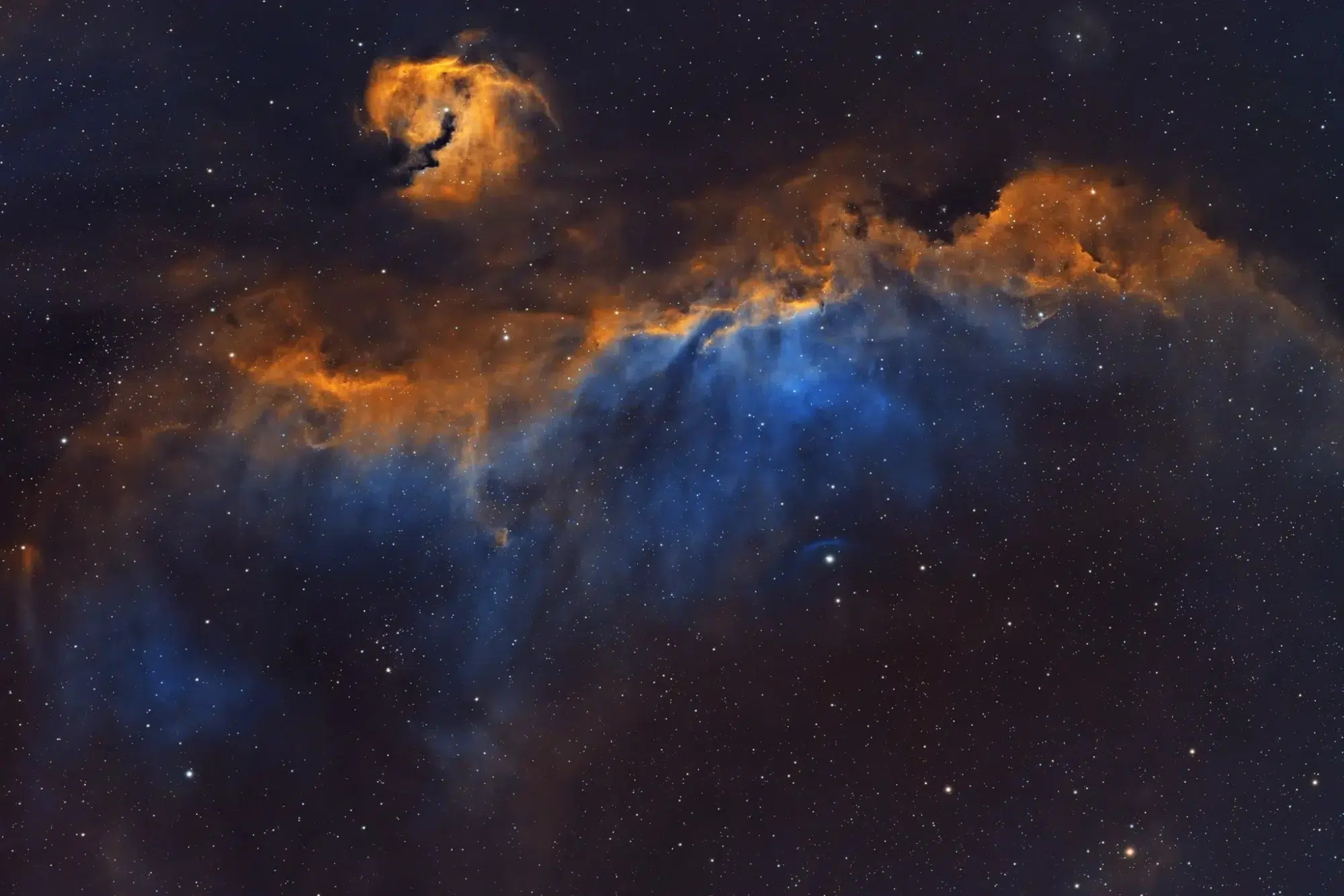
I cropped the image to a 3:2 aspect ratio even though my ZWO ASI533MM captures native 1:1 square images. The wider crop felt more balanced for this nebula. I’ve also included the square version for comparison. Drizzle integration during stacking gave me plenty of resolution to work with, doubling the image size from 3008×3008 to 6016×6016 pixels.
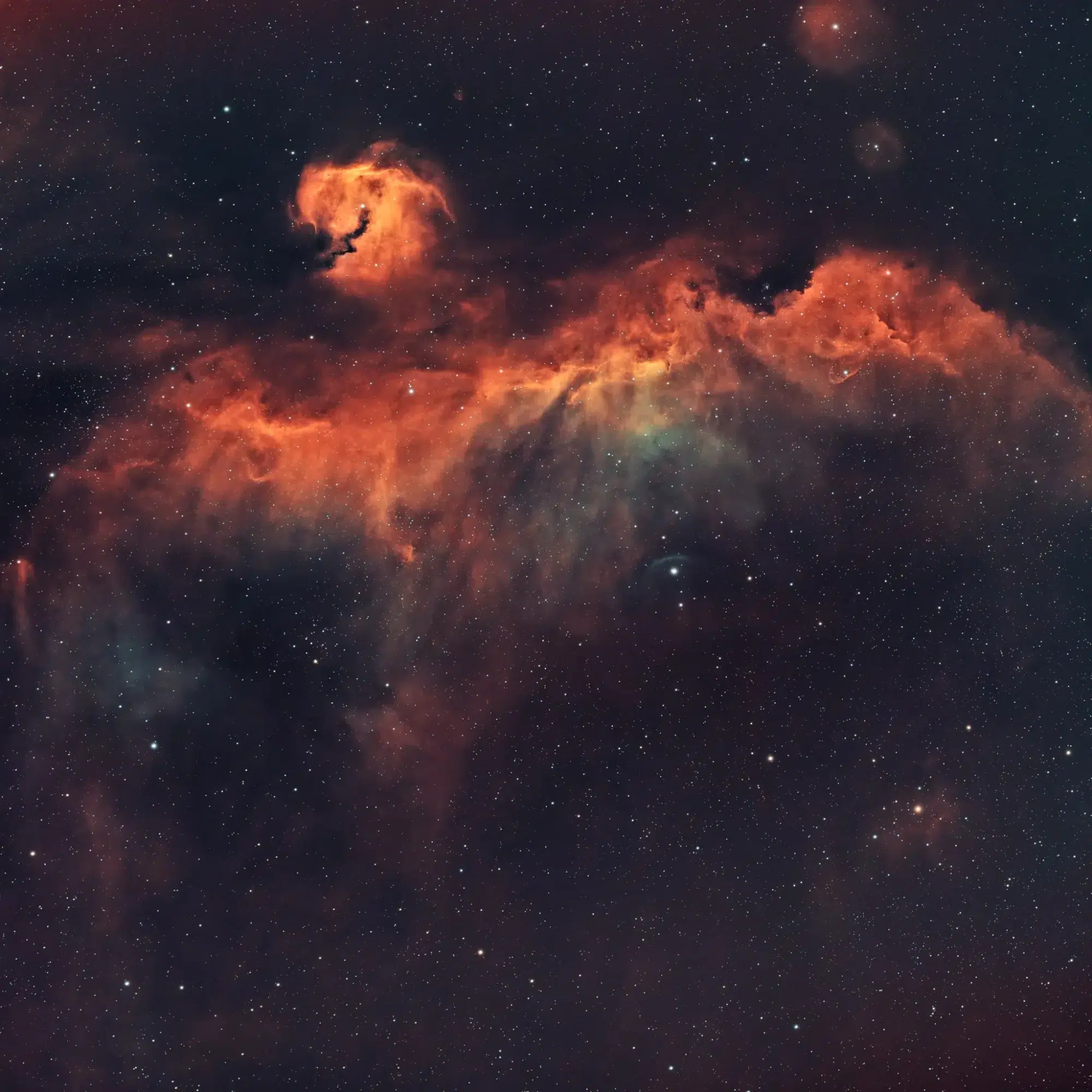
Pixinsight Steps
Below are the steps I took in Pixinsight to process the Seagull Nebula:
- On All Master Files (Hydrogen-alpha, Sulfur-II, Oxygen-III, Red, Green, Blue)
- Dynamic Crop
- Automatic Background Extraction
- Deconvolution with Blur Xterminator
- Histogram Transformation to stretch all master files
- RGB
- Channel combination to combine red, green, and blue
- Noise Xterminator plugin
- Image Solver (located in astrometry > scripts)
- Spectrophotometric Color Calibration
- Dynamic Narrowband Combination
- Combine using the Dynamic Narrowband Combination formula (see video)
- Add Ha as luminance to the combined image (see video)
- Star Xterminator (see video)
- Curves Transformations including contrast, saturation, and color adjustments
- Local Histogram Equalization to sharpen the image (with masking the background)
- Combine RGB stars into the starless narrowband image (see video)
- Minor final tweaks such as contrast and saturation
Notable Features of this Image
One of the most distinctive elements visible in the Seagull Nebula is the blue shock wave (bow shock) that appears along the right wing. This prominent bluish arc is created by the runaway star FN Canis Majoris and adds an interesting dynamic element to the region.

The Seagull Nebula’s “head” area (which is the official IC 2177 designation) shows good detail with a mix of bright emission and darker dust lanes. The wings, formed by an H II region cataloged as Sharpless 2-296, span across the frame with fine filaments revealing ongoing star formation activity.
Final Thoughts
The nearly 12 hours of integration time and dynamic narrowband processing allowed me to reveal detailed structure throughout this massive emission nebula. At 100 light-years across, the Seagull Nebula is one of the larger targets in the winter sky, and its size works well with wide-field telescopes like my Redcat 51.
If you plan to shoot IC 2177, ensure your southern sky is clear of obstructions. It sits fairly low for those in the Northeast United States, even lower than the Orion Nebula. The Seagull Nebula’s large size makes it an excellent beginner target for both mono and color cameras.
Clear skies!
Have you photographed the Seagull Nebula? I’d love to see your results and hear about your experiences in the comments below!

